Strange Bedfellows: A History of Unexpected Automotive Collaborations
It should come as no surprise that some of the most iconic automobile designs have interesting associations in their geneses. Where those associations come from, though, can sometimes be surprising, as companies leapfrog the globe trying to find the talent, technical expertise, and productive capacity to build a new or unique model.
These stories seem to pop up more often when there’s a shift in a company’s priorities or an attempted to redefine its direction or mission. Large organizations can be slow to adjust to these changes, and so often these major manufacturers turned to small teams to produce what have often become standout models from already legendary lineups.
Often, but not always, as we see in this montage of odd couples.
Volvo P1800
The famous Volvo 1800 actually came about thanks to another unusual partnership in the earlier, and lesser known, P1900. In 1953, Volvo commissioned California-based fiberglass body producer Glasspar to help make a sports car based on the 544. A few were made, but changes in leadership ultimately killed the project.
The idea was reborn in the 1800 and design moved from California to Italy, where prototypes for the new sport concept were produced by Frua. Frua couldn’t handle large-scale production, though, so Volvo took the prototypes to Karmann in Germany. Though it initially agreed to produce the car, Volkswagen’s contract with Karmann to produce the competitor Ghia ruled it out.
Stymied, Volvo turned to Jensen in England after exploring some other dead-end options. Jensen’s production possibilities looked promising to Volvo, but ultimately Jensen didn’t have the capacity to produce the bodies.
An agreement was struck with Scottish Pressed Steel, which then produced the P1800 bodies so poorly that a very frustrated Volvo ended up moving production back to Sweden in 1962. The renamed 1800S (no longer with a “P”) signified the changeover.
Chevrolet Vega Cosworth
By the 1970s, Detroit was finally catching up with Bob Dylan’s 1964 proclamation that the times were a-changing. Big V8s were being stifled by environmental restrictions and gas shortages. GM announced its plan for a new, small and import-taming model in 1969.
The Vega would Chevrolet’s star to tackle the challenge of a new age — but the Vice President of GM and Chevrolet product manager, a certain John DeLorean (yes, that DeLorean), suggested a higher performance model would help to promote the model.
At DeLorean’s urging, F1’s go-to Cosworth Engineering in England took the new all-aluminum 2.0-liter inline-four and created a high-compression, double overhead cam screamer. Early models were then constructed in Quebec, Canada. Unfortunately, by the time they finally came to production, the compression ratio had severely dropped and the original promise of 185 horsepower had fallen to 110. Worse, the Z/09 Cosworth package nearly doubled the base price of a standard Vega, from $3,098 to $6,065. Oddly, it was this fact that Chevrolet chose to use for its ad campaign, proudly (and stupidly) pronouncing the Cosworth as “One Vega for the Price of Two.”
Unsurprisingly, with poor performance and not the best build quality, Chevrolet ultimately failed to sell the original planned of 5,000 models despite the evocative Formula 1 name and John Player Special color pallet.
BMW M1
Similar to the P1800, the development of BMW’s E26 M1 was a multi-national effort its parent company was not prepared to undertake.
Although the M1 had an inline-six like other Bavarian creations of the time, little outside of the block shared any architecture with a series production model. The basic M30 block was modified into a racing unit with dual overhead cams and became the legendary M88/1 by fledgling skunkworks BMW Motorsport. When it came to a home for the motor, BMW turned to Italian designer Giugiaro to produce an angular, mid-engine, two-seat sports car.
The design looked revolutionary, but in fact was an evolution of the French designer Paul Bracq’s 1972 Turbo concept. Still, like Frua, Giugiaro wasn’t prepared to produce the M1 in series, nor was BMW, so the company commissioned Lamborghini to produce the fiberglass bodies and assemble the cars.
The late 1970s saw Lamborghini nearly close its doors and BMW was forced to coordinate body production from Italdesign, a tubular chassis from Marchesi and Company in Modena, and partial production at the Baur Karosserie and BMW Motorsport.
By the time the delay-fraught production was completed, the race series the M1 was intended for was gone, leaving BMW to envision their own one-off Procar Championship series.
Ford Taurus SHO
While BMW had the productive capacity to construct the M1’s engine but not the rest of the car, the opposite was true when it came to our next subject.
Ford produced a world-beating sedan package in the 1986 Taurus. Yet, when it came to making the Super High Output version for the 1989 model year, Ford needed some help from Japan.
They commissioned production of a high performance V6 from motorcycle giant Yamaha. The results were impressive: 220 horsepower from the 7,000 rpm redline 3.0 V6, which was mated solely to a five-speed manual produced by Ford-owned Mazda. The recipe proved wildly popular with over 15,500 sold in the first model year alone.
Chrysler TC by Maserati
After last week’s article, you probably saw this one coming. The list of names associated with the Chrysler TC by Maserati is one of the more impressive rosters on this list and certainly worth a look. The idea was born from Chrysler head Lee Iacocca and his Maserati-owning friend Alejandro de Tomaso (yes, the namesake of the Ford-powered Pantera). Their plan was to take the Chrysler underpinnings and add some hand-crafted Maserati style above.
Produced in Milan, the German Getrag manual version of the TC had a very special engine. Featuring a 16-valve head developed by Maserati in conjunction Cosworth Technology, German Mahle pistons mated with an IHI turbocharger from Japan resulted in 200 turbocharged horsepower for the 1989 model year. On paper, the formula was similar to the Taurus above, but the expensive TC was no where near the sales success with only 7,300 produced in total — of which a scant 501 were made with the Cosworth/Maserati turbo motor.
Chevrolet Corvette ZR-1
When it came to producing a world-beating Corvette, all-American Chevrolet turned to … England. That’s because, at the time, General Motors also owned a certain Lotus Automobiles, which in turn took the small-block Chevy concept to new heights with what would ultimately become the LT5.
The engine featured dual-overhead cams, 32 valves and computer-controlled fuel injection, which combined to produce an impressive 375 horsepower in 1987. There was only one little (or, big, as it turned out) problem: how to mate the dual overhead cams with a pushrod block.
The result was a brand new, all-aluminum engine that shared little in architecture with the standard Corvette. Since it wouldn’t run alongside normal GM engine production, LT5 construction was subcontracted to Mercury Marine, which produced all the LT5 GENI and GENII engines for every C4 ZR-1.
Mercedes-Benz 500E/E500
As the 1990s saw Mercedes-Benz swallow legendary tuning firm AMG into its portfolio, one would assume when it came to creating a super sedan in Stuttgart, the company would have had plenty of ammunition. After all, it was AMG that had created the supercar thrashing M117/9 6.0 “Hammer” that so captivated all the magazines at the same time Mercedes-Benz was planning its own tuned W124. But as Mercedes-Benz spent time planning the W124’s replacement, Porsche had the capacity on its dormant 959 production line.
A deal was struck where bare chassis were loaded at Daimler-Benz in Unterturkheim and shipped across town to Porsche in Zuffenhausen. Revised and widened fenders covered larger R129 500SL 16-inch wheels and brakes. Porsche installed an all-aluminum 5.0 322 horsepower V8. Mercedes-Benz then repatriated the partially complete cars to paint them, but Porsche completed finally assembly. More than 10,000 were completed in this serve-return manner; some took a further step and were sent over to Affalterbach to be massaged by Mercedes-Benz subordinate AMG into the E60, which held a 380-horsepower 6.0-liter version of the M119.
Audi RS2
Audi wasn’t about to let Mercedes-Benz steal all the Porsche ingenuity.
When it came to creating an even faster version of the Audi 80-based S2 Avant, the Ingolstadt firm employed Porsche to turn its wagon up to 11. Having completed upgrading the W124, Porsche took Audi’s diminutive wagon and quite literally cranked the boost up; a new ECU, intercooler, intake, exhaust, larger turbocharger and a few other changes netted 315 horsepower from the legendary inline-five turbo.
Unlike the subtle W124 exterior changes, the Audi and Porsche combination got a bit shouty, too, mounting 993-spec wheels, brakes, mirrors and even lights with sculpted bumper covers that would become the signature of RS models in the future. Performance was superlative for the day and especially so for a wagon. Consequently, these have become one of the most sought and imitated Audi products in the company’s catalog.
Audi RS4/RS6
As with the RS2, when it came to turning the wick up on the new S4 Avant, Audi needed outside help. This time, though, it wasn’t cousin Porsche that came to the aid of Ingolstadt. Audi’s star was on the rise and its corporate parent had assisted with the procurement of UK-based Cosworth Technology. The twin-turbocharged V6 in the S4 was no slouch, producing over 250 horsepower in European trim. But Cosworth took the engine to another level, redesigning the heads and bolting larger turbos and intercoolers to the V6. The results boosted the motor 115 horsepower to 380 net and a very impressive 141 horsepower per liter. All 4,000 B5 RS4 mills and spares were produced in England by a company that only had 1,000 employees.
When it came to production of the subsequent RS6 twin-turbocharged V8, Cosworth again played a roll, this time casting bespoke blocks for the S6 internals, building the motors up with turbochargers, and then shipping them back to Audi’s Quattro GmbH division for assembly in the car.
More by Carter Johnson
Latest Car Reviews
Read moreLatest Product Reviews
Read moreRecent Comments
- AMcA My theory is that that when the Big 3 gave away the store to the UAW in the last contract, there was a side deal in which the UAW promised to go after the non-organized transplant plants. Even the UAW understands that if the wage differential gets too high it's gonna kill the golden goose.
- MKizzy Why else does range matter? Because in the EV advocate's dream scenario of a post-ICE future, the average multi-car household will find itself with more EVs in their garages and driveways than places to plug them in or the capacity to charge then all at once without significant electrical upgrades. Unless each vehicle has enough range to allow for multiple days without plugging in, fighting over charging access in multi-EV households will be right up there with finances for causes of domestic strife.
- 28-Cars-Later WSJ blurb in Think or Swim:Workers at Volkswagen's Tennessee factory voted to join the United Auto Workers, marking a historic win for the 89- year-old union that is seeking to expand where it has struggled before, with foreign-owned factories in the South.The vote is a breakthrough for the UAW, whose membership has shrunk by about three-quarters since the 1970s, to less than 400,000 workers last year.UAW leaders have hitched their growth ambitions to organizing nonunion auto factories, many of which are in southern states where the Detroit-based labor group has failed several times and antiunion sentiment abounds."People are ready for change," said Kelcey Smith, 48, who has worked in the VW plant's paint shop for about a year, after leaving his job at an Amazon.com warehouse in town. "We look forward to making history and bringing change throughout the entire South." ...Start the clock on a Chattanooga shutdown.
- 1995 SC Didn't Chrysler actually offer something with a rearward facing seat and a desk with a typewriter back in the 60s?
- The Oracle Happy Trails Tadge


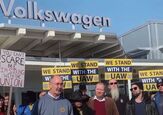

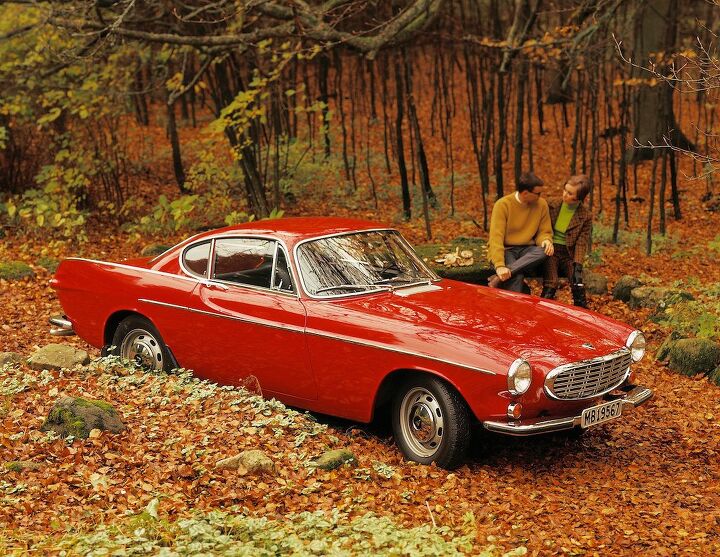
























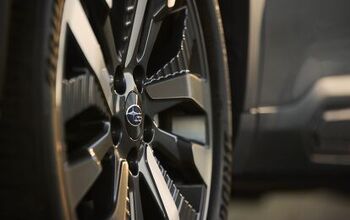

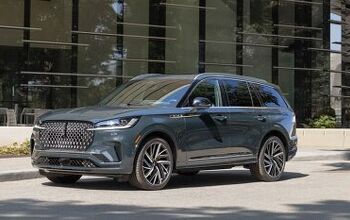
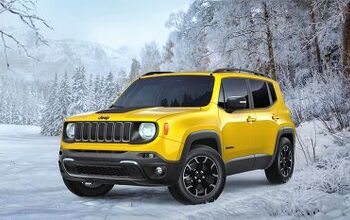


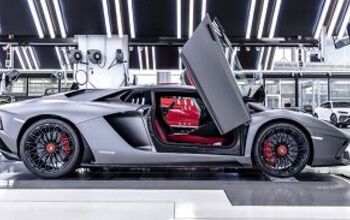

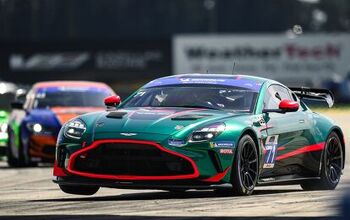
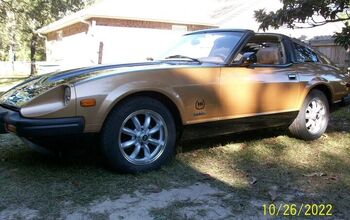
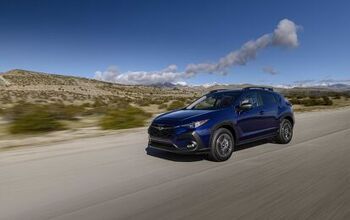
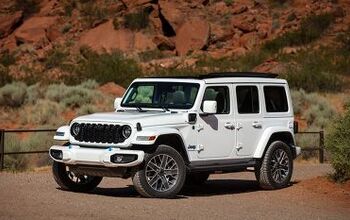
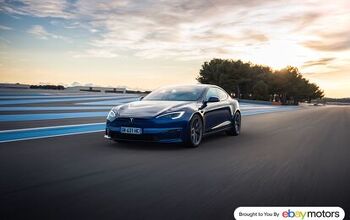
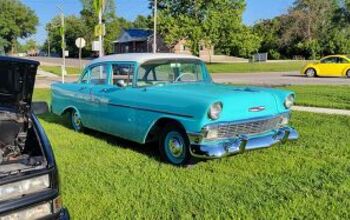
Comments
Join the conversation
You forgot Lincoln Mercury Pantera
Yea I'm late here, but wanted to mention that Kia bought the 2nd gen Lotus Elan and made it's version of it. Also Tesla used the Elise chassis for it's first electric car. I think Lotus probably made more money helping other manufacturers then it did selling cars.